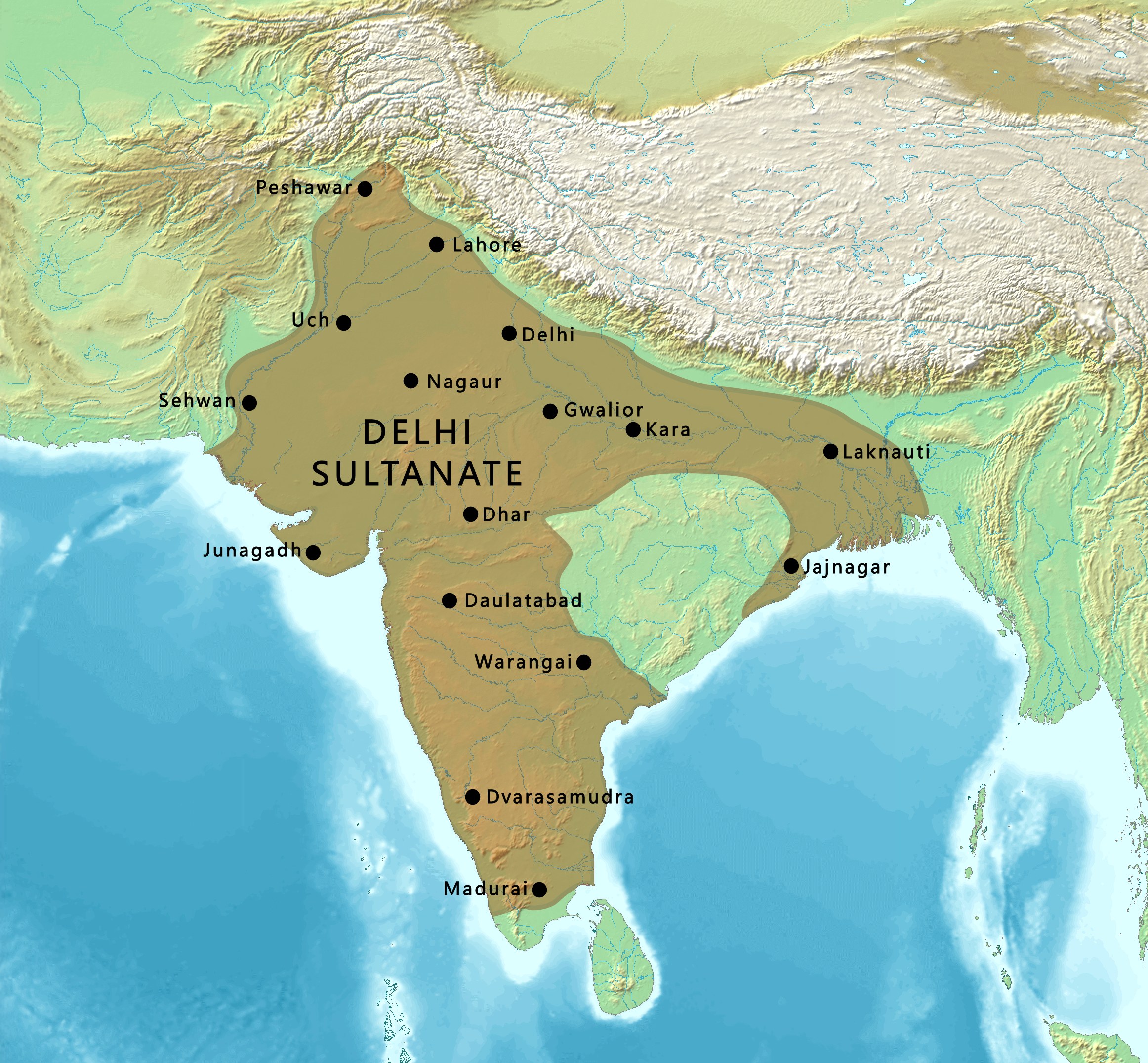History of India
- Introduction to Ancient India
- The Mauryan Empire
- Post-Mauryan India and the Golden Age
- Early Medieval India
- The Delhi Sultanate
- The Mughal Empire - Part I
- The Mughal Empire - Part II
- The Advent of European Powers
- The British Raj - Part I
- The British Raj - Part II
- Independence & Partition
The Delhi Sultanate
Early Turkish Rulers: The Establishment of the Delhi Sultanate

Indian Islamic dynasties based in Delhi (1206–1526).
The Delhi Sultanate, a significant era in Indian history, marked the establishment of Muslim rule in India. This period was initiated by the early Turkish rulers, who laid the foundation for the Delhi Sultanate. This article will delve into the establishment of the Delhi Sultanate by the Slave Dynasty and the Khilji Dynasty.
The Slave Dynasty
The Slave Dynasty, also known as the Mamluk Dynasty, was the first dynasty of the Delhi Sultanate. It was established by Qutb-ud-din Aibak in 1206, who was a slave of Muhammad Ghori. Aibak was a capable military leader who laid the foundation of the Delhi Sultanate and initiated the construction of the Qutub Minar, a renowned architectural marvel.
Following Aibak, the reign was taken over by Iltutmish, who is often considered the real consolidator of the Delhi Sultanate. He expanded the empire, established a centralized administration, introduced the silver Tanka and copper Jital - the two basic coins of the Sultanate period, and completed the construction of the Qutub Minar. Iltutmish's reign marked a period of stability and growth for the Delhi Sultanate.
The Khilji Dynasty
The Khilji Dynasty, founded by Jalal-ud-din Khilji, marked the second dynasty of the Delhi Sultanate. However, the most notable ruler of this dynasty was Alauddin Khilji, who ascended the throne after murdering his uncle, Jalal-ud-din.
Alauddin Khilji was known for his military campaigns, administrative reforms, and attempts to deal with price control. He established a well-organized administrative system and took measures to strengthen the military. His market reforms, known as the "Hisbah" system, aimed at controlling prices of various commodities and ensuring their availability in the market. Alauddin Khilji's reign was marked by several successful military campaigns, including the notable ones against the kingdoms of Gujarat, Ranthambore, Mewar, and the Deccan.
Conclusion
The early Turkish rulers played a significant role in establishing the Delhi Sultanate and shaping its administrative and military structure. The Slave Dynasty and the Khilji Dynasty, with their notable rulers, laid the foundation for the Delhi Sultanate, marking a significant era in Indian history. Their reigns were characterized by military expansion, administrative reforms, and significant contributions to architecture and public works.